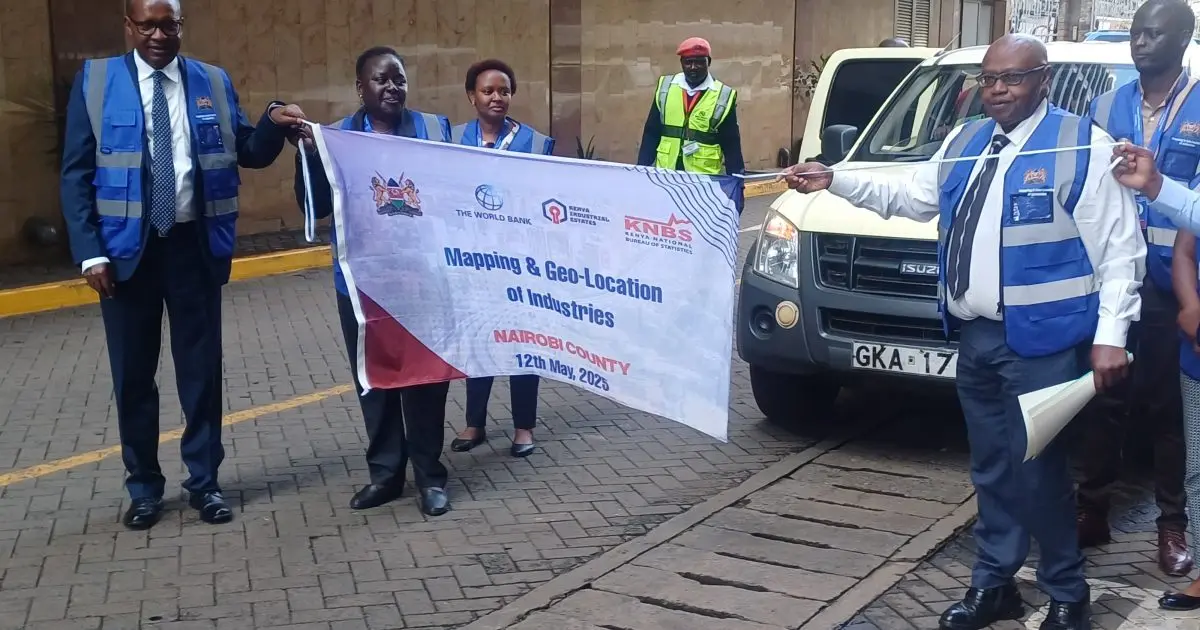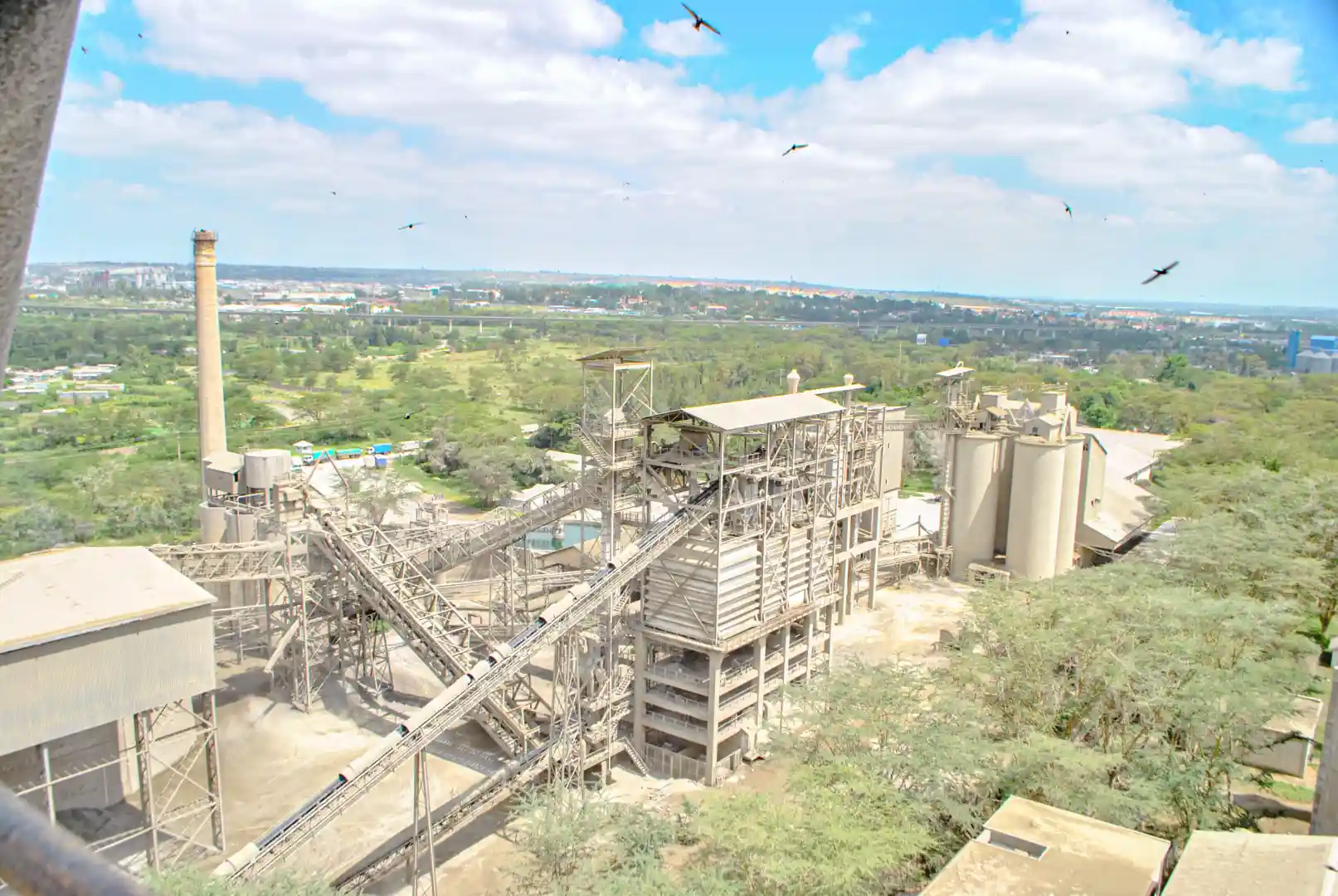In a decisive move aimed at revitalizing and strategically bolstering its manufacturing sector, the Kenyan government has officially launched an extensive industrial mapping and geo-location exercise specifically targeting Nairobi County, the nation’s capital and a significant industrial hub. This ambitious initiative is designed to generate comprehensive and granular data on the county’s industrial landscape, which will serve as a robust foundation for evidence-based policy planning and targeted interventions aimed at fostering substantial growth and competitiveness within Kenya’s manufacturing sector.
This critical exercise is being spearheaded by the State Department for Industry, a key government body responsible for shaping and implementing industrial policy, in close collaboration with several strategic partners. These include the Kenya National Bureau of Statistics (KNBS), the primary source of official statistical data in Kenya, ensuring the accuracy and reliability of the collected information; the Kenya Industry and Entrepreneurship Project (KIEP), a World Bank-funded initiative focused on enhancing the competitiveness and growth of Kenyan SMEs; and Kenya Industrial Estates (KIE), a state corporation mandated to promote the development of micro, small, and medium enterprises (MSMEs) through the provision of industrial infrastructure and support services. This multi-agency collaboration underscores the government’s commitment to a holistic and data-driven approach to industrial development.
Speaking at the launch event, Principal Secretary (PS) of the State Department for Industry, Dr. Juma Mukhwana, emphasized the collaborative nature and strategic importance of this initiative. In a speech delivered on his behalf by Karanja Yora, the Secretary Administration from the State Department for Industry, Dr. Mukhwana lauded the commencement of the “Mapping and Geo-location of Industries and Development of Industrial Database and Directory for Kenya” project.
Dr. Mukhwana stated, “This project represents a significant step toward mapping the industrial landscape of Nairobi and addressing the sector’s unique challenges through accurate, location-based data.” He highlighted the critical need for a comprehensive understanding of the existing industrial ecosystem within Nairobi County as a prerequisite for formulating effective policies and implementing targeted programs that can truly address the specific needs and challenges faced by manufacturers operating in the region.
The industrial mapping exercise will involve a systematic and thorough collection of data from a wide spectrum of industries operating across the diverse sub-counties of Nairobi. The primary objective is to create a detailed and up-to-date database that meticulously captures crucial information about each industrial establishment. This data will include the size of the operation, its precise geographical location, the specific operational activities undertaken, the production capacity, the levels of employment, and, importantly, the key challenges and constraints faced by these manufacturers in their day-to-day operations and long-term growth prospects.
Dr. Mukhwana underscored the strategic imperative of this data collection effort in the context of Kenya’s broader industrialization goals, particularly within the framework of the Bottom-up Transformation Agenda (BETA), a key economic development strategy of the current administration focused on empowering grassroots businesses and communities. “In order to realize our industrialization aspirations especially within the framework of the Bottom-up Transformation Agenda (BETA), we must develop a comprehensive industrial database and directory,” the PS noted.
He further elaborated on the anticipated benefits of this mapping exercise, stating, “Mapping and documenting the state of manufacturing will strategically position the sector for growth and competitiveness.” By providing a clear and accurate picture of the current industrial landscape, the government will be better equipped to identify key growth areas, understand existing capabilities, and pinpoint specific bottlenecks that need to be addressed through targeted policy interventions and support programs.
The methodology employed in this exercise will integrate sophisticated geospatial technologies to create both a physical and a digital directory of industries. This will involve accurately geo-coding the locations of industrial establishments, allowing for spatial analysis of industrial clusters and concentrations. Furthermore, the exercise will culminate in the generation of a detailed assessment report that identifies specific opportunities for industrial expansion, diversification, and overall development within Nairobi County. This report will serve as a crucial tool for policymakers and investors alike.
Dr. Mukhwana reiterated the fundamental role of industrialization in Kenya’s overall economic development, emphasizing its direct contributions to job creation, value addition to raw materials, and the strengthening of the country’s economic base. He also highlighted the strategic importance of a robust manufacturing sector as Kenya seeks to enhance its position within the East African region and leverage the opportunities presented by the African Continental Free Trade Area (AfCFTA). A well-mapped and understood industrial sector is essential for Kenya to effectively compete and collaborate within these broader economic frameworks.
“Our ability to design targeted interventions has long been hampered by fragmented or outdated data,” Dr. Mukhwana acknowledged, emphasizing the critical need for this comprehensive data collection exercise. “This exercise will help close that gap and ensure government support is aligned with the real needs of our manufacturers from micro to large-scale industries,” he affirmed, highlighting the commitment to providing tailored support based on accurate and current information.
The PS further emphasized the alignment of this initiative with Kenya’s long-term development blueprint, Vision 2030, the current Bottom-up Economic Transformation Agenda (BETA), and the implementation frameworks for the AfCFTA. He pointed out that the data generated will be instrumental in enhancing cluster development, optimizing infrastructure planning to support industrial growth, facilitating industrial upgrading through technology adoption and skills development, and improving market access for Kenyan manufactured goods both domestically and internationally.
Dr. Mukhwana concluded his remarks by making a strong call to all industry players operating within Nairobi County to fully support the data collection exercise. He emphasized the long-term significance of their participation, stating, “The data collected today will influence the decisions we make tomorrow that directly affect the business environment, access to finance, skills development and industrial growth.” This highlights the crucial role of collaboration and accurate information sharing in ensuring the success and impact of this important national initiative.
In his own address, the Secretary Administration from the State Department for Industry, Karanja Yora, underscored the urgency of undertaking this industrial mapping exercise, noting that it has been a considerable period since a similar comprehensive data collection effort was conducted within the country’s industrial sector. He emphasized the need for current and accurate data to inform effective policy decisions.
“We want to capture all the industries located in Kenya, within our boundaries, with an aim to include all sectors, ranging from small enterprises to large corporations, ensuring a holistic understanding of the industrial ecosystem in the region,” Yora stated, highlighting the inclusive scope of the exercise, which aims to provide a complete picture of Nairobi’s diverse industrial landscape, from burgeoning startups to well-established multinational corporations.
Yora also addressed the potential financial implications of the survey, noting that the total cost remains somewhat uncertain at this early stage. He explained that data collection is inherently a dynamic process and may encounter unforeseen challenges or require adjustments that could potentially alter the initial cost estimates. This pragmatic approach acknowledges the complexities involved in such a large-scale data gathering undertaking.
Meanwhile, Isaac Ndegwa, a Senior Manager at the Kenya National Bureau of Statistics (KNBS), provided insights into the geographical distribution of industrial establishments across Nairobi’s 17 sub-counties. He highlighted the significant variability in industrial concentration, stating, “Different sub-counties have different rates of establishment, creating diverse industrial concentrations.” He specifically pointed out that certain areas within Nairobi, such as Baba Dogo, may exhibit a higher density of industrial activity compared to other sub-counties. This geographical insight underscores the importance of the geo-location aspect of the exercise in understanding the spatial dynamics of Nairobi’s industrial sector.
Ndegwa further explained the planned workflow for the data processing and analysis. He indicated that as data is actively gathered from industrial establishments across Nairobi County, it will be processed concurrently with the report writing phase. This efficient workflow will be facilitated by close collaboration with the Kenya Institute of Statistics, a leading institution in statistical training and research. This parallel processing approach aims to expedite the analysis of the collected data and ensure a swift turnaround in generating the comprehensive assessment report that will inform future policy decisions and industrial development strategies. The insights gained from this mapping exercise are expected to be invaluable in shaping a more competitive and prosperous industrial sector in Nairobi and, by extension, the entire nation of Kenya.
Ready to take your career to the next level? Join our dynamic courses: ACCA, HESI A2, ATI TEAS 7 , HESI EXIT , NCLEX – RN and NCLEX – PN, Financial Literacy!🌟 Dive into a world of opportunities and empower yourself for success. Explore more at Serrari Ed and start your exciting journey today! ✨
Photo source: Google
By: Montel Kamau
Serrari Financial Analyst
13th May, 2025
Article, Financial and News Disclaimer
The Value of a Financial Advisor
While this article offers valuable insights, it is essential to recognize that personal finance can be highly complex and unique to each individual. A financial advisor provides professional expertise and personalized guidance to help you make well-informed decisions tailored to your specific circumstances and goals.
Beyond offering knowledge, a financial advisor serves as a trusted partner to help you stay disciplined, avoid common pitfalls, and remain focused on your long-term objectives. Their perspective and experience can complement your own efforts, enhancing your financial well-being and ensuring a more confident approach to managing your finances.
Disclaimer: This article is for informational purposes only and does not constitute financial advice. Readers are encouraged to consult a licensed financial advisor to obtain guidance specific to their financial situation.
Article and News Disclaimer
The information provided on www.serrarigroup.com is for general informational purposes only. While we strive to keep the information up to date and accurate, we make no representations or warranties of any kind, express or implied, about the completeness, accuracy, reliability, suitability, or availability with respect to the website or the information, products, services, or related graphics contained on the website for any purpose. Any reliance you place on such information is therefore strictly at your own risk.
www.serrarigroup.com is not responsible for any errors or omissions, or for the results obtained from the use of this information. All information on the website is provided on an as-is basis, with no guarantee of completeness, accuracy, timeliness, or of the results obtained from the use of this information, and without warranty of any kind, express or implied, including but not limited to warranties of performance, merchantability, and fitness for a particular purpose.
In no event will www.serrarigroup.com be liable to you or anyone else for any decision made or action taken in reliance on the information provided on the website or for any consequential, special, or similar damages, even if advised of the possibility of such damages.
The articles, news, and information presented on www.serrarigroup.com reflect the opinions of the respective authors and contributors and do not necessarily represent the views of the website or its management. Any views or opinions expressed are solely those of the individual authors and do not represent the website's views or opinions as a whole.
The content on www.serrarigroup.com may include links to external websites, which are provided for convenience and informational purposes only. We have no control over the nature, content, and availability of those sites. The inclusion of any links does not necessarily imply a recommendation or endorsement of the views expressed within them.
Every effort is made to keep the website up and running smoothly. However, www.serrarigroup.com takes no responsibility for, and will not be liable for, the website being temporarily unavailable due to technical issues beyond our control.
Please note that laws, regulations, and information can change rapidly, and we advise you to conduct further research and seek professional advice when necessary.
By using www.serrarigroup.com, you agree to this disclaimer and its terms. If you do not agree with this disclaimer, please do not use the website.
www.serrarigroup.com, reserves the right to update, modify, or remove any part of this disclaimer without prior notice. It is your responsibility to review this disclaimer periodically for changes.
Serrari Group 2025












